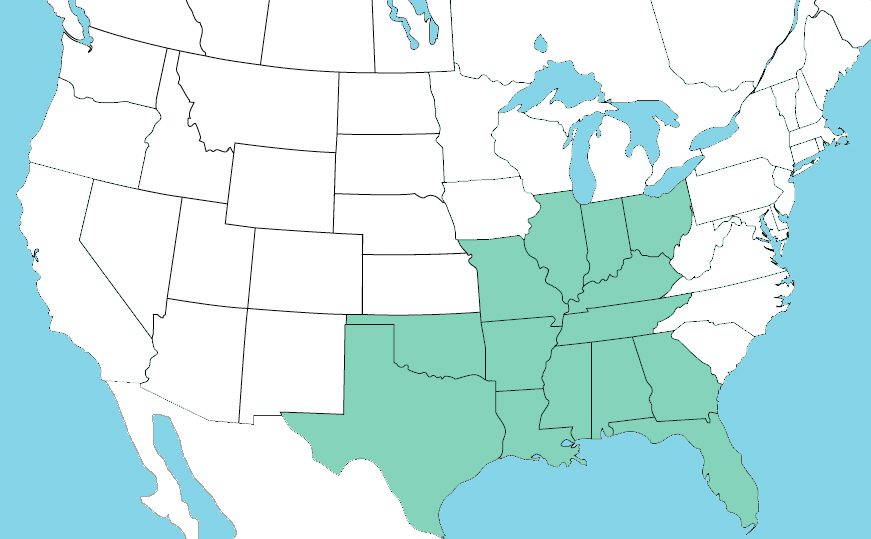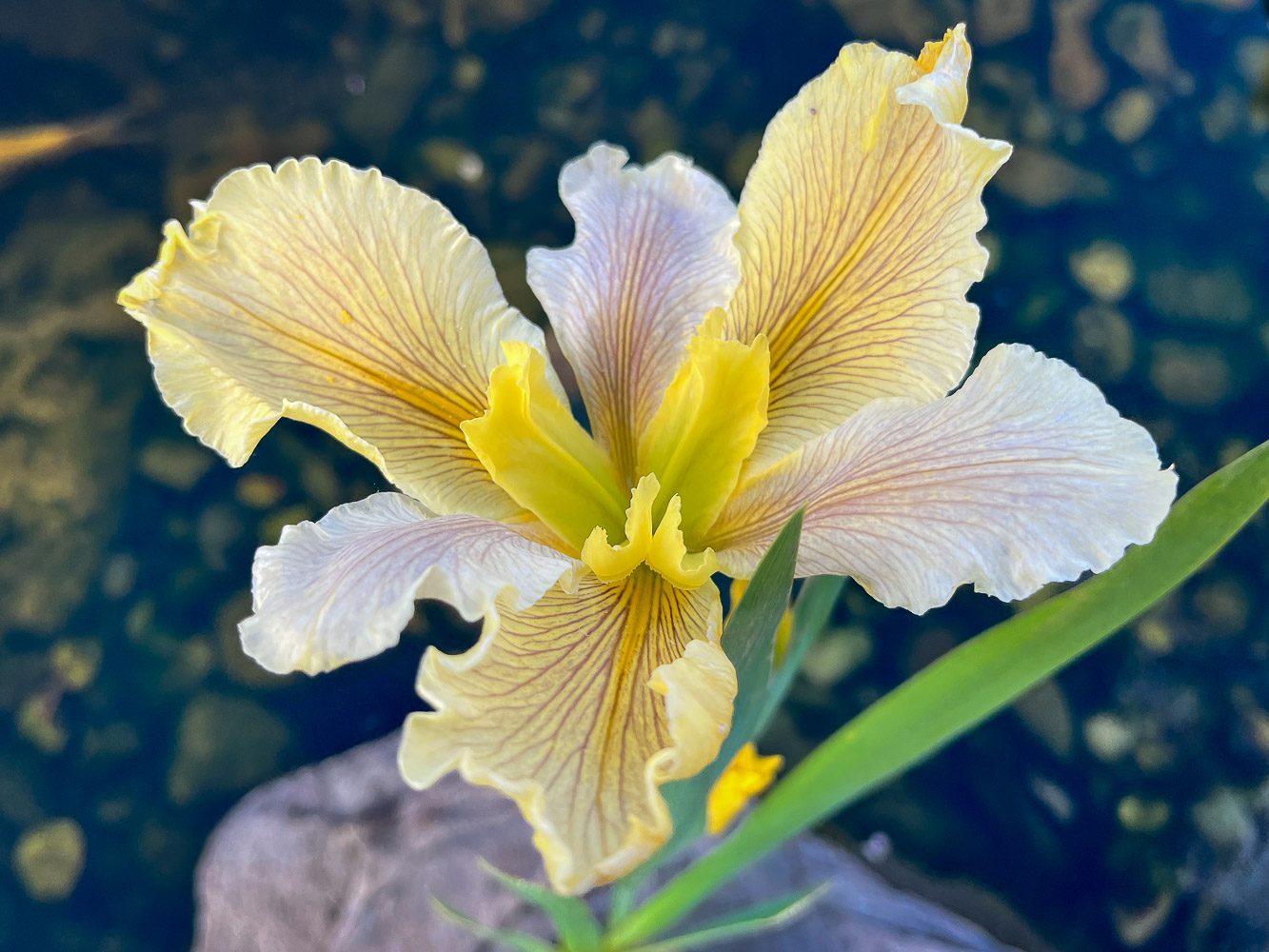How to Care for Your Yellow Iris
Yellow Iris Basics
Iris ‘Wow Factor’ is a hybrid of native Louisiana Iris.
Wow Factor’s flowers are pale yellow with brownish veining. Foliage is green and swordlike. More mild-mannered than invasive Yellow Flag Iris, it’s the perfect plant for adding some bright color to pond margins.
The word “Iris” comes from the Greek word for rainbow – a nod to the flower’s many color varieties.
Native Area

Iris ‘Wow Factor’ is a member of the Louisiana Iris group. These diverse and colorful flowers show up most prominently in the swamps and wetlands of the Southern U.S., although their native habitat spans as far north as Illinois.
Planting
Yellow Irises prefer moist soil or shallow water up to 6 inches deep. They’re a perfect fit for streams, bogs or a shallow shelf in your pond.
These plants perform best in full sun but will tolerate some shade.
You have three options when it comes to putting irises in your pond: keeping them in the pot they come in, replanting them in a fabric plant pot or planting them directly in the pond.
Planting Your Yellow Iris
We recommend planting Yellow Iris directly into the pond or stream whenever possible. Doing so not only takes away the burden of an unsightly pot but also gives your plant the ability to pull nutrients out of the water. This natural filtration helps prevent string algae and keeps your fish happy and healthy.
To plant your Yellow Iris, remove the plant from the pot. You can do this by carefully dumping out the contents or cutting the pot away with a soil knife. Then gently press the soil and roots against the pond liner and cover with enough rocks and gravel to keep it in place. That’s it!
Keeping the Store Pot
If you keep your plant in the pot in which you bought it, simply place the pot in at least 2 inches of water and surround with rocks to prevent it from tipping over. When choosing a spot, make sure your plant is safe from koi or other fish that might try to play football with an unsecured pot.
Some people like to add a thin layer of gravel to the top of the plant for decoration or to contain dirt if the top of the pot is submerged. For additional aesthetic appeal, cut away the top rim of the pot.
Moving to a Fabric Planter
Moving your plant to a fabric planter will give it a little more space to spread its roots.
If you choose to go this route, simply place the plant – soil and all – into the planter and fill in the remaining space with aquatic planting media.
Add gravel to the top if desired, then slowly lower the planter into the pond at an angle to keep as much of the soil in the pot as possible.
Dealing with Dirt
Regardless of how you choose to display your plant, you might see a little bit of soil make its way into your pond. This is normal and will clear up on its own if you have a skimmer.
If you like to keep your pond spotless and don’t want to wait for the dirt to settle, place a Fine Filter Pad (available at Splash) in your skimmer to catch the extra tiny particles of dirt. Simply place the pad anywhere in the skimmer where the water will pass through, then remove the pad as soon as the water is clear.
Add a flocculant like Rapid Clear for even faster results.
In-Season Care
Marginal plants are easy to care for year-round.
Most marginals don’t need additional fertilizer if they’re planted directly in a pond or stream. They get all the nutrients they need right from the water. If your plant is still in a pot, however, you’ll want to use a once-a-year aquatic plant fertilizer.
Remove dead leaves and flowers from your plant throughout the season. Regular maintenance will help it channel its energy into healthy growth.
Yellow Iris grows at a moderate rate. It is unlikely to take over a pond when properly tended and is less aggressive than some other Iris varieties. If your plant does seem to outgrow its spot, simply pull it out of the pond or pot, and divide it as needed.
Winter Care
Yellow Iris is winter hardy to Zone 6, meaning it will survive the winter in much of the U.S. (Check the USDA’s Plant Hardiness Zone Map if you’re not sure which zone you live in.)
Whether you cut back your Yellow Iris in the fall is a matter of personal preference.
If you leave it alone, the foliage will turn brown in winter, adding some winter interest to your pond and giving wildlife a source of food and shelter. You can then prune dead foliage in the spring.
If you choose to cut back your plant in the fall, simply use scissors to prune the leaves to a few inches above the water line.
Plants to Pair with Copper Iris
The gallery was not found!Each type of plant you add to your pond pulls a different kind of nutrient out of the water. A yellow flower takes out different nutrients than a red one, and a wide leaf takes out different nutrients than a narrow one.
These nutrients will go on to feed string algae if left to grow unchecked, so the more and the wider variety of plants you have in your pond, the better.
Choose plants with a variety of colors, shapes, heights and bloom times. This mix will not only maximize nutrient uptake but also keep your pond looking beautiful throughout the season.
Plants that pair well with Yellow Iris include Bull’s Eye Tropical Waterlilies, Corkscrew Rush and Water Forget-Me-Nots.


